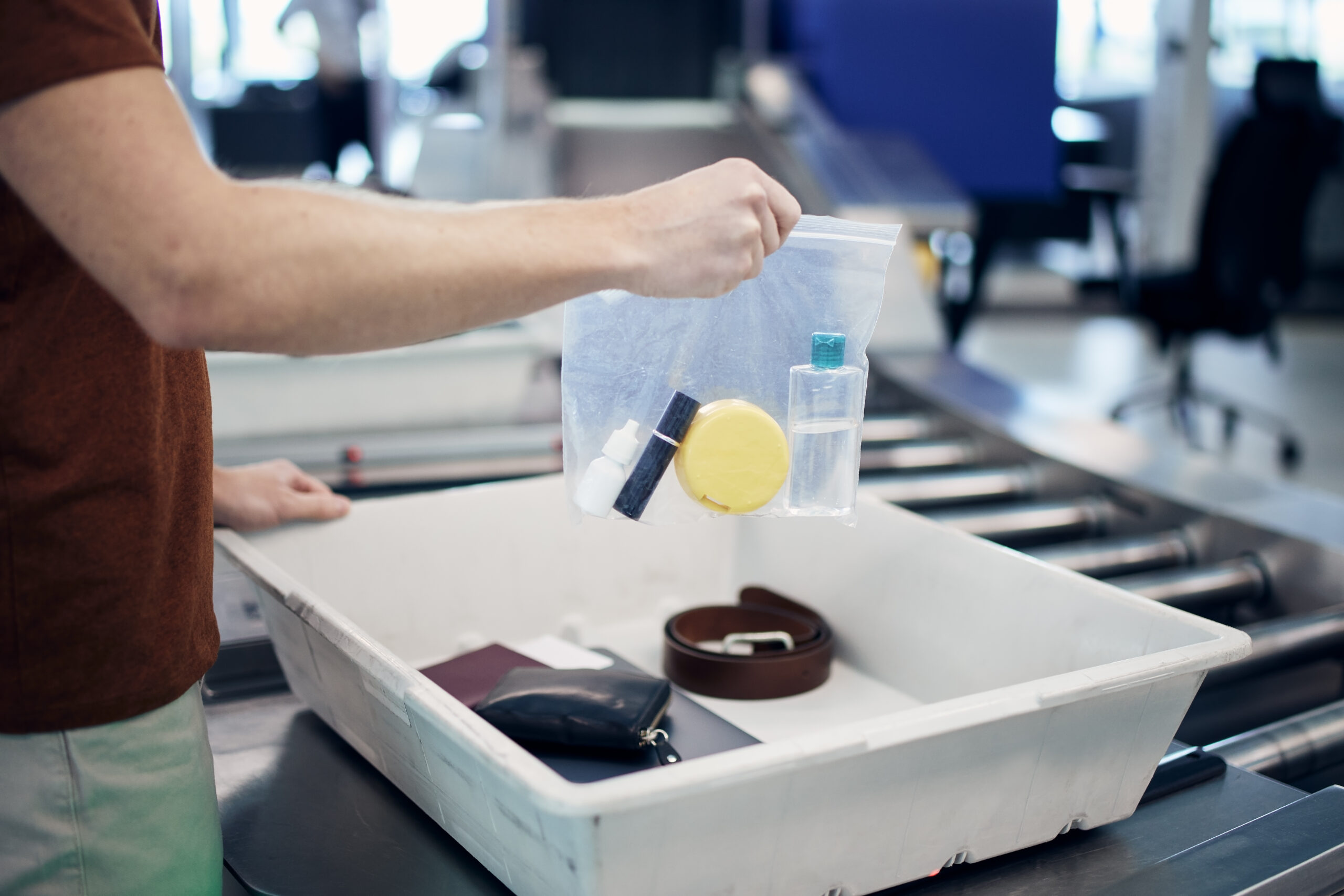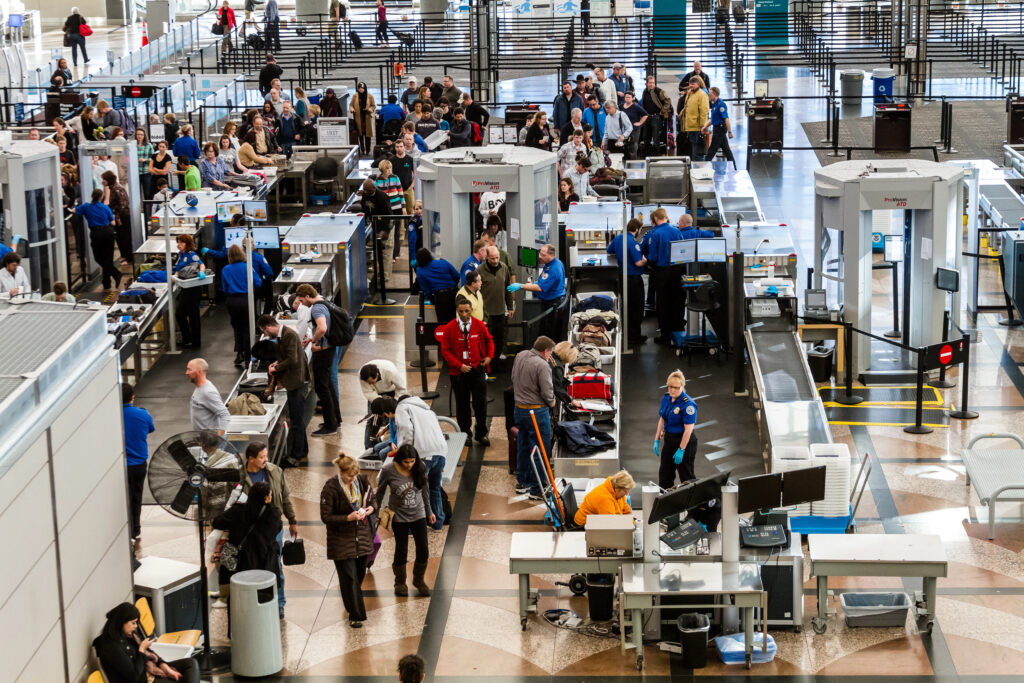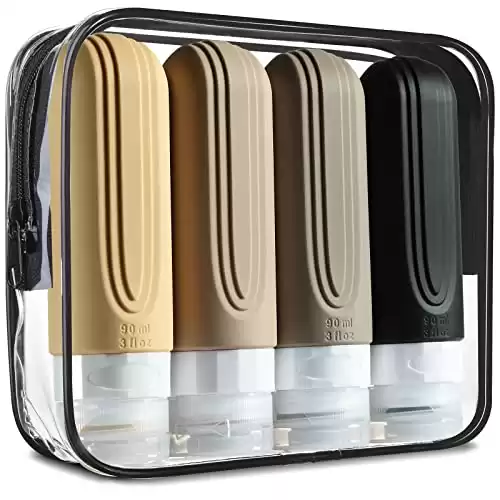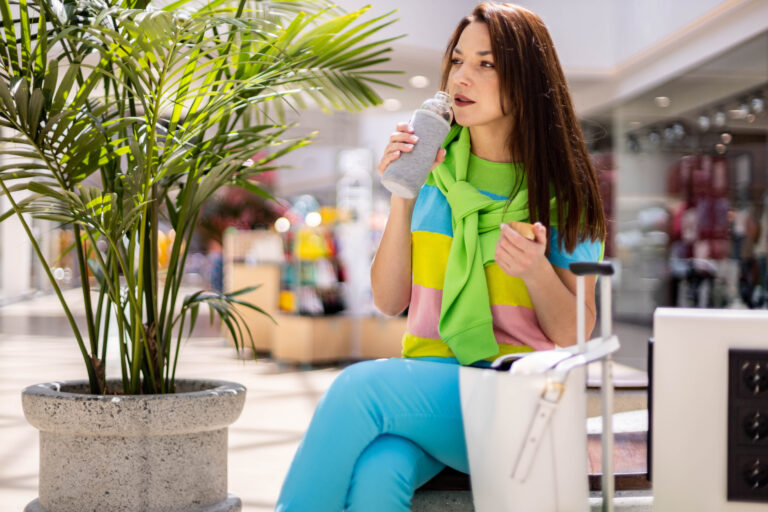
Disclosure: Some of the links in this post are affiliate links, meaning we may earn a small commission if you make a purchase through them.
Did you know that every minute spent in a security line at the airport can feel like an eternity? Picture this: you’re running late for your flight, finally making it to the security checkpoint, only to find yourself stuck behind someone fumbling to dump their oversized shampoo bottle. It’s a scenario we’ve all experienced, and those moments add up. On average, it takes 2 minutes for each person to ditch their liquids before making it through security. The TSA enforces a rule known as the 3-1-1 liquids rule for all flyers. So, how many fluid ounces can you carry on a plane and avoid being the person holding everyone else up in line?
The Basics of Airline Travel Rules
Airline travel has rules concerning what you can pack in your carry-on luggage. The Transportation Security Administration (TSA) sets these regulations to ensure safety aboard flights within the United States and from major airports worldwide.
Every passenger must pass through TSA checkpoints, where security officers screen luggage and personal items for forbidden materials, including certain liquids. Navigating TSA rules efficiently means understanding the limits on carry-on liquids prescribed by the 3-1-1 liquid rule.
This guideline dictates that travelers pack liquids in containers no larger than 3.4 ounces (100 milliliters), all fitting into a single quart-sized bag. Items like prescription medication, baby formula, breast milk, and potentially flammable liquids have specific rules for how they must be packed and declared at security checks to avoid additional screening or confiscation.
Knowing these basics smooths out the process of getting through TSA checkpoints quickly and without hassle.
Importance of Knowing Liquid Restrictions
Understanding liquid restrictions before heading to the airport helps you breeze through security checkpoints easily. TSA officers enforce these rules to ensure safety aboard planes, primarily to prevent the smuggling of liquid explosives.
Knowing what counts as liquids and how much you can carry in your carry-on baggage saves time and avoids the hassle of having your items confiscated. It’s essential not just for a smoother screening process but also for efficiently complying with TSA regulations.
Packing your liquids correctly according to TSA guidelines ensures that all necessary toiletries, hand sanitizer, and medical supplies reach your final destination with you. Containers must be 3.4 ounces or smaller and fit into a single quart-sized bag per passenger.
This rule applies to gels, aerosols, creams, pastes, and liquids. Being well-informed about these limitations means less stress at security screenings and more confidence navigating airport protocols.
Definition of the 3-1-1 Rule
The 3-1-1 rule limits the quantity of liquids, gels, and aerosols you can bring in your carry-on bag. Each passenger can pack containers of up to 3.4 ounces (100 milliliters) or less in a quart-sized clear plastic zip-top bag.
This guideline applies to toiletries such as shampoo, lotion, and toothpaste. The goal is to enhance airline security by preventing threats like liquid explosives.
To comply with this regulation, travelers must ensure that their liquids are packed in containers not exceeding 3.4 ounces and placed together in a single quart-sized bag for easy inspection at airport security checkpoints.
Why the TSA Implements This Rule

The TSA implements the 3-1-1 rule to enhance aviation security. This regulation limits the quantity of liquids, gels, and aerosols that passengers can carry onto airplanes. By restricting these items to containers no larger than 3.4 ounces per item in a quart-sized bag, the TSA aims to prevent potential threats posed by liquid explosives or other harmful substances.
This proactive measure is part of the ongoing effort to ensure passenger safety and maintain secure air travel experiences.
Types of Liquids Allowed and Prohibited
After understanding why the TSA implements the 3-1-1 rule, knowing which liquids are allowed and prohibited in carry-on luggage is essential. Permitted liquids include travel-sized containers of toiletries such as shampoo, conditioner, and lotion, not exceeding 3.4 ounces or 100 milliliters each.
Additionally, liquid medications and baby food necessary for your journey are allowed. However, larger containers of liquid items like water bottles, full-size toiletries, gel packs with freezer packs, and live fish are commonly prohibited in carry-ons.
Adhere to these regulations to ensure a smooth passage through airport security checkpoints without delay or inconvenience. Understanding what is permitted can help travelers pack efficiently while avoiding frustration at security checks. Check the TSA list of what is allowed before leaving for your trip to avoid having to dump it out.
Overview of Permitted Liquids
This includes everyday toiletries such as shampoo, conditioner, and toothpaste. You can also bring other necessary liquids like prescription medications and baby formula in larger quantities, but they must be declared at security for inspection.
It’s important to remember that all liquid containers must fit comfortably within the quart-sized bag and be easily accessible during security checks.
By following these guidelines on permitted liquids, you can ensure a smoother experience at airport security and avoid any potential issues with prohibited items in your carry-on luggage.
It’s always a good idea to check the TSA website for specific information on what is allowed before packing for your trip.
Common Prohibited Liquids in Carry-Ons
Some standard prohibited liquids in carry-ons include aerosols, flammable items such as gasoline and lighter fluid, and strong acids like battery acid. Also, carry-on luggage does not allow household items like bleach, disinfectants, and pepper spray.
It’s important to remember that these restrictions are in place for the safety of all passengers and to prevent any potential security threats. Ensuring compliance with these guidelines will help make the airport security process smoother for everyone.
It is essential to note that carrying these prohibited liquids in your checked luggage may also be subject to specific regulations or prohibitions by airlines or aviation authorities for safety reasons.
Packing Tips for Liquids in Carry-On Luggage
Remember that all containers must be 3.4 ounces or smaller when packing liquids in your carry-on luggage. Place these small containers in a clear quart-sized plastic bag for easy access during security checks.
Use tamper-evident bags or double-seal your toiletry bag with silicone bags to prevent spills. Organize your quart-sized suitcase to be easily visible and ready for inspection at the security checkpoint.
Moreover, consider placing larger bottles of contact lens solution or other necessary liquids in your checked baggage to avoid any issues at airport security. Following these packing tips will streamline the security process and make your travel experience hassle-free.
Exceptions to the 3-1-1 Rule
After organizing your quart-sized bag according to the 3-1-1 rule, it’s essential to be aware of exceptions that apply. Regarding medical and infant necessities, passengers can bring more significant quantities of liquids exceeding the standard limit of 3.4 ounces or 100 milliliters per item in their carry-on bags.
However, these items must be declared at security for inspection and approval. This exemption is crucial for individuals who require medications, baby formula, breast milk, or baby food during flights.
Correctly declaring these exemptions can help streamline the security screening process and ensure a hassle-free travel experience for everyone involved.
When traveling with medically necessary liquids or items for infants, it’s essential to know how to declare and present them at security checkpoints. Clear communication with Transportation Security Administration (TSA) officers regarding these exceptions will facilitate a smooth process through airport security.
Medical and Infant Exceptions
Certain medical and infant items are exempt from the 3-1-1 liquids rule. You can bring over 3.4 ounces of liquid medication or baby formula in your carry-on, but you must declare them for inspection.
The TSA may also allow other necessary liquids for your health or a child’s well-being, such as breast milk or juice for infants. These exceptions help ensure that passengers with medical needs or traveling with young children can have what they need during their flight without compromising security measures.
Passengers should be prepared to show the items to security officers during the screening process and allow additional time for these necessary inspections. It’s essential to familiarize yourself with these exceptions and understand how to notify TSA agents about these exempted items at airport security checkpoints.
How to Navigate Airport Security Efficiently
Place 3.4 ounces or fewer containers in a quart-sized clear bag to navigate airport security efficiently with your liquids. Place this bag in an easily accessible part of your carry-on and remove it during the security screening process.
Ensure all containers are visible and properly sealed to expedite the screening procedure.
Additionally, be ready to declare any necessary exemptions for medical or infant products at the security checkpoint, as these may require additional inspection. Following these guidelines will allow you to move through airport security more swiftly while complying with TSA regulations on carrying liquids.
Step-by-Step Guide Through Security with Liquids
Navigating airport security with liquids might seem daunting, but following these steps can help make the process smoother:
- Prepare your quart-sized bag: Fill a clear plastic bag with containers holding no more than 3.4 ounces of liquid each.
- Separate the bag from your carry-on: Place the quart-sized bag in a bin separate from your other belongings for X-ray scanning.
- Declare larger quantities: At the security checkpoint, be ready to declare any medically necessary liquids or baby formula.
- Remove electronics and liquids separately: When placing them in the X-ray bin, keep your electronic devices separate from your quart-sized bag.
- Be transparent and cooperative: Follow instructions from security personnel and be honest about any liquids you carry.
Advanced Tips for Frequent Flyers
After mastering the art of flying internationally with liquids, frequent flyers should consider enrolling in TSA PreCheck. This program allows expedited security screening, which means you can keep your liquids and laptops inside your carry-on, minimizing hassle and saving time during airport security checks.
Moreover, staying informed about the latest technological advancements in airport security can help frequent travelers adapt to any changes quickly. Utilizing innovative tools such as automated screening lanes and advanced imaging technology can streamline the process when traveling with liquids.
Additionally, taking advantage of mobile boarding passes and electronic notifications for flight updates will further enhance a frequent flyer’s travel experience. These features allow travelers to stay organized and current on any potential changes that might impact their journey—making air travel with liquids more convenient.
Utilizing TSA PreCheck for Liquids

To expedite the process of carrying liquids through airport security, travelers can utilize TSA PreCheck. This program allows members to breeze through security without removing shoes, laptops, belts, and even their quart-sized bag of travel-size liquids.
With TSA PreCheck, passengers benefit from a more convenient and efficient screening process for their permitted fluids up to 3.4 ounces per item in a clear zip-top plastic bag. By enrolling in TSA PreCheck, travelers can save time and minimize the hassle of packing and unpacking liquids at security checkpoints.
Moreover, TSA PreCheck membership also enables individuals to experience shorter wait times and a smoother journey through airport security—offering peace of mind that they won’t miss their flight due to lengthy screenings or liquid-related issues.
Conclusion
Preparing for a smooth journey involves understanding the TSA’s rules for carrying liquids on a plane. Remember the 3-1-1 rule, which allows you to carry liquids in containers of 3.4 ounces or less.
Organize your quart-sized bag and be mindful of prohibited items to ensure a hassle-free passage through airport security. Knowing and following these regulations can streamline your travel experience and avoid potential delays at the security checkpoint.
FAQs
Can I bring larger bottles of liquid on the plane if they’re not whole? No, even if the bottle is partially filled, any container larger than 3.4 ounces will not be allowed through security. This includes water bottles, so bring your refillable water bottle and fill it after you have gone through security.
How many items can fit in the approved 1-quart bag for liquids? You can pack as many items as possible into your 1-quart bag as long as each item adheres to the 3.4-ounce limit and the bag seals completely.
Are there any exceptions to these liquid rules? Yes, medications and certain essential nutritional or medical items are exceptions; however, you should declare them at security checkpoints.





You really make it seem so easy with your presentation but
I find this topic to be really something that I think I would
never understand. It seems too complex and extremely broad for me.
I’m looking forward for your next post, I will try to get the hang of it!
My web page https://Penzu.com/p/b31b2681
Thank you for your feedback!